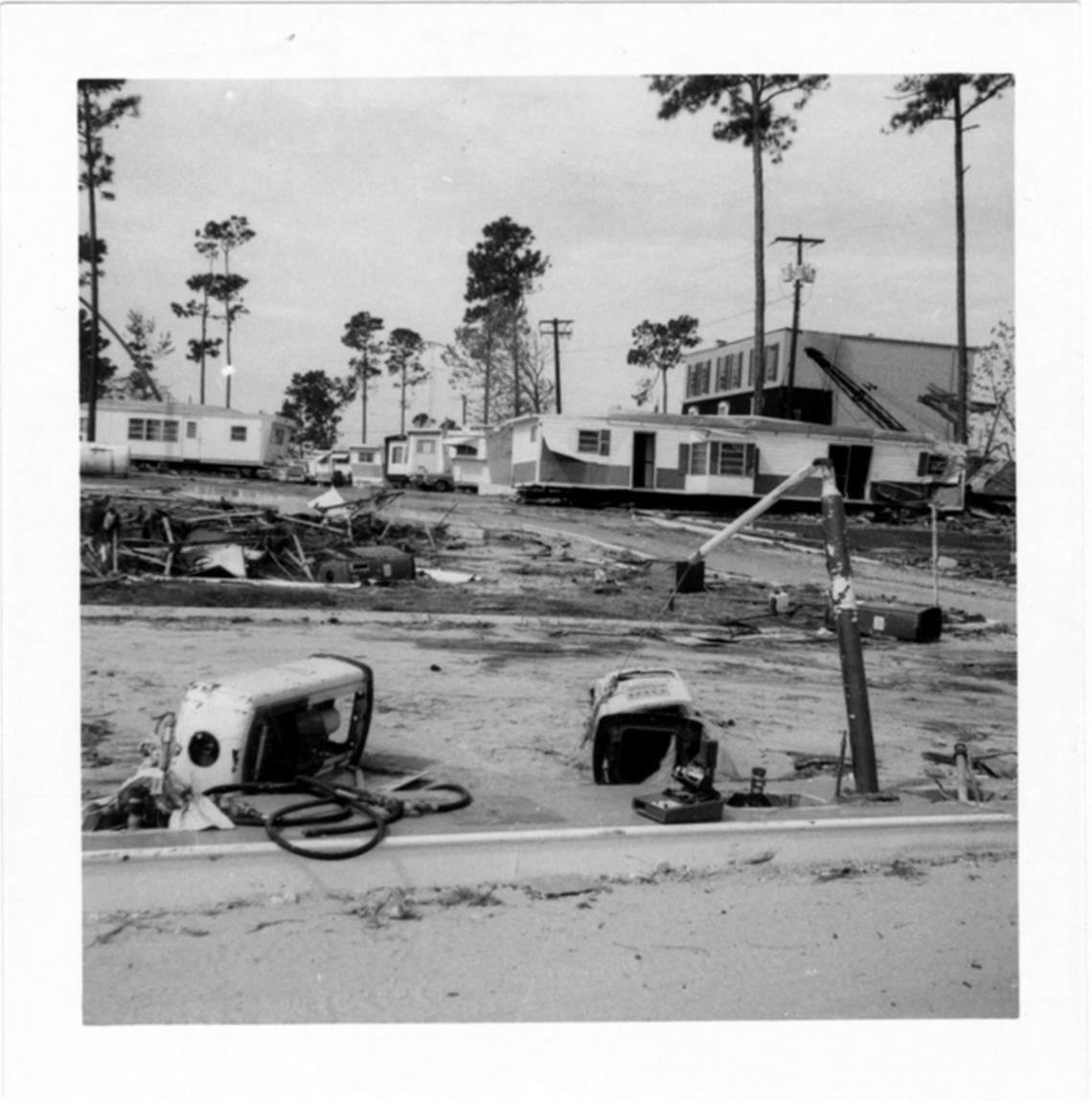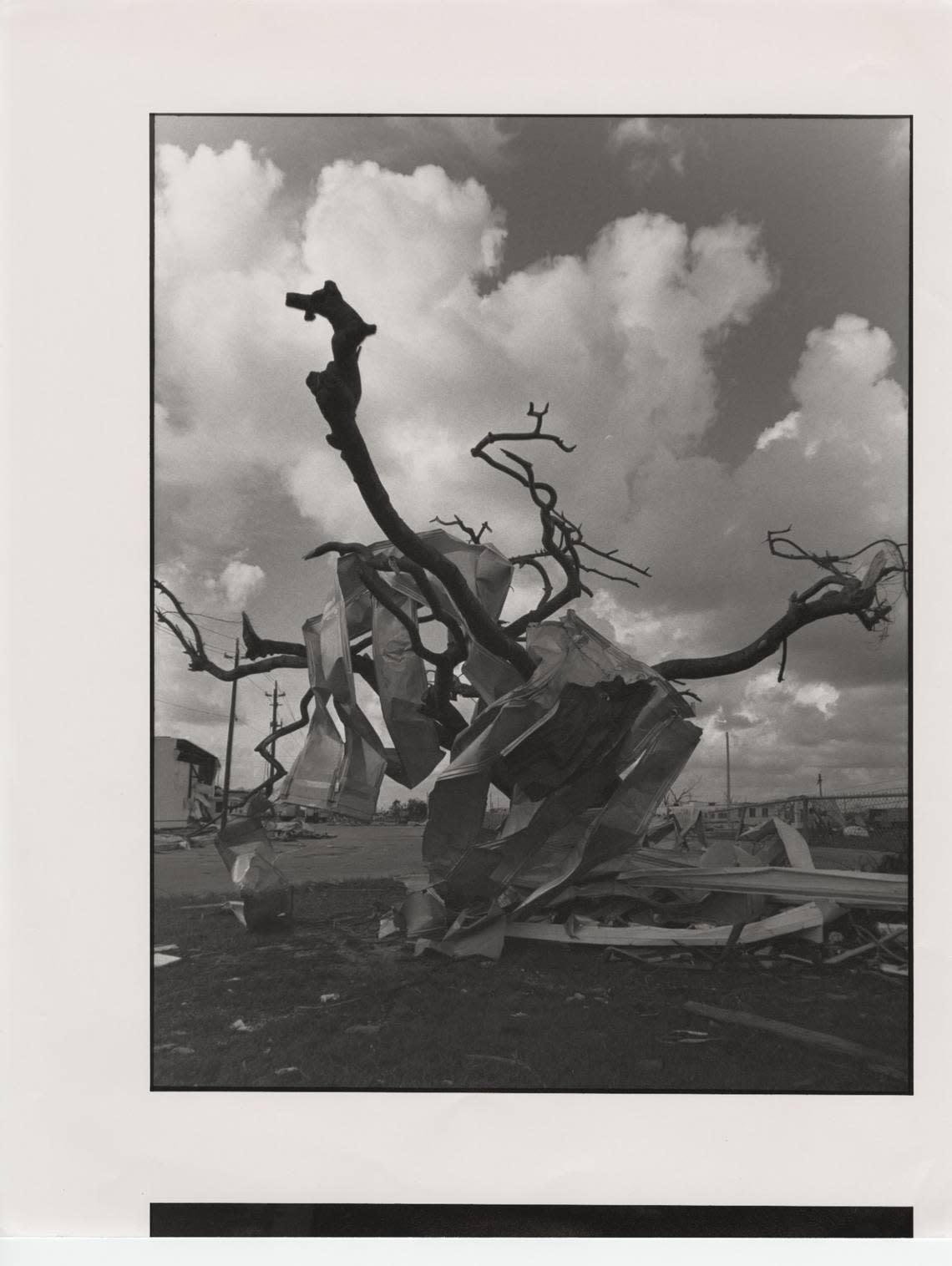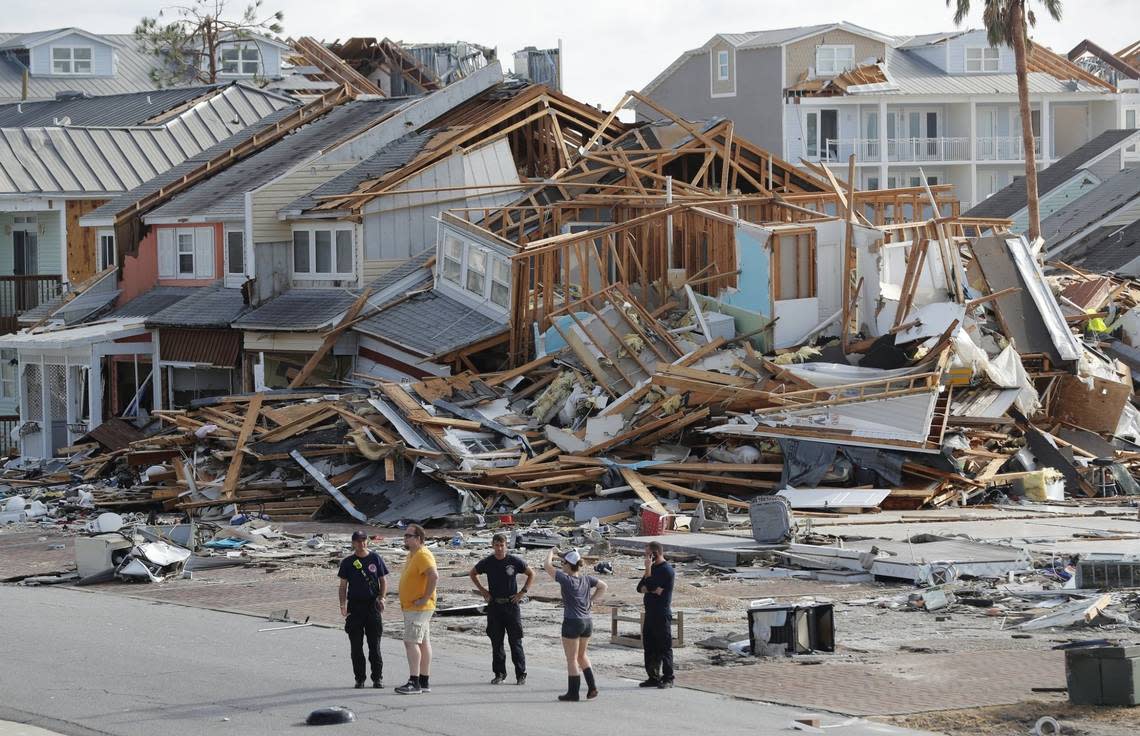Cat. 5 storms making landfall in U.S. are rare. But three out of the four smashed Florida
Hurricane Ian made landfall Wednesday afternoon as a powerful Category 4 hurricane battering Florida’s Gulf Coast with 150 mph winds.
Before touching down around 3 p.m at Cayo Costa, an island off Captiva that’s accessible only by boat and has few full-time residents, it had been swirling around the southwest Florida coast with maximum sustained winds of almost 155 miles per hour, just under the 157-mph wind speed marker for a Category 5 hurricane.
READ MORE: Hurricane Ian batters Florida with ‘catastrophic’ winds and surge. Rescue calls pour in
Since meteorologists began tracking hurricanes by sustained wind-speed in the 1970s, using the Saffir-Simson Wind scale, there have been only four Category 5 hurricanes that have made landfall in the United States, with three of the four hitting Florida: the 1935 Labor Day Hurricane in the Florida Keys; Hurricane Andrew, which slammed into southern Miami-Dade County on Aug. 24, 1992; and Hurricane Michael, which pummeled the Panhandle on Oct. 10, 2018.
The fourth Category 5 storm was Hurricane Camille, which crashed into the Mississippi coast on Aug. 17, 1969, with sustained winds of more than 170 mph.
There are five categories of hurricanes based on the Saffir-Simson Wind scale:
Category 1: Winds between 74-95 mph
Category 2: Winds between 96-110 mph
Category 3: Winds between 111-129 mph
Category 4: Winds between 130-156 mph
Category 5:- Winds of 157 mph or greater
The damage from Category 5 hurricane winds can be catastrophic, with homes and businesses destroyed, uprooted trees and railroad tracks, power outages that can last for months and a storm surge that crests over communities. The wind scale does not account for flooding, storm surge or tornadoes.
And there have been plenty of Category 4 storms that have caused death and destruction, including Hurricane Irma, which devastated the lower Florida Keys in 2017; Hurricane Maria, which pummeled Puerto Rico in 2017; and Hurricane Sandy, which hit the New York-New Jersey area hard in 2012.
Hurricane Katrina, the third-deadliest hurricane with 1,200 deaths, according to the National Hurricane Center, was only a Category 3 storm.
Here is a look at the four Category 5 storms that have made landfall in the United States:
1935 Florida Keys Labor Day Hurricane
This was the most intense U.S. hurricane, with maximum sustained winds of 185 mph, according to the National Hurricane Center’s ranking of hurricanes by barometric pressure from 1851-2010. The storm was first detected east of the Bahamas as a tropical storm.
The hurricane hit the Florida Keys on the evening of Sept. 2, 1935, Labor Day, killing 408 people, many of whom were World War I veterans working in the area. Much of the damage was south of Key Largo to just north of Marathon, according to the website Hurricanes: Science and Society, compiled by researchers at the University of Rhode Island.
The tracks of the Florida East Coast Railroad were completely destroyed.
Damage is estimated at an adjusted $269 million, according to a 2011 report by the National Hurricane Center and National Weather Service.
1969 Hurricane Camille

On the night of Aug. 17, 1969, Hurricane Camille slammed into the Mississippi coast, making it the second-most intense hurricane of record to hit the United States from 1851-2010, according to the National Hurricane Center.
The wind estimates at the coast were near 200 mph, but actual maximum sustained winds are unknown, as the hurricane destroyed all the wind-recording instruments in the landfall area.
The combination of winds, sea-level surges, and rainfall caused 256 deaths (143 on the Gulf Coast and 113 in the Virginia floods). Three deaths were reported in Cuba. The hurricane caused $11.30 billion in damage in inflation-adjusted dollars.
1992 Hurricane Andrew

Hurricane Andrew first hit Elliot Key, an island in Biscayne National Park just east of Homestead, before making a second landfall at Homestead Air Force Base in southern Miami-Dade County in the early morning hours of Aug. 24, 1992, with maximum sustained winds of 150 mph.
The National Hurricane Center later upgraded the storm to a Category 5 with 165 mph winds and gusts as high as 177 mph.
The powerful storm killed 23 people in the United States and three in the Bahamas. It destroyed 49,000 homes and damaged another 108,000. At the time, it was the most expensive storm to hit the U.S., causing $26 billion in damages, now $45.6 billion in adjusted dollars.
2018 Hurricane Michael

On Oct. 10, 2018, three days after forming over the Caribbean Sea, Hurricane Michael made landfall in Mexico Beach, a small town of about 1,100 people, in the Florida Panhandle. It was the most powerful storm on record to strike the Panhandle, with a storm surge of up to 14 feet and 155-mph winds.
The post-storm analysis estimates there were sustained winds of 160 mph.
The storm was responsible for 16 deaths and $29 billion in adjusted dollars of damages to the United States.
Other notable category storms include the 1899 San Ciriaco hurricane in Puerto Rico where 3,400 people died in floods, and thousands were left without food, water, or shelter, as well as the 1900 Galveston Hurricane, the deadliest weather disaster in U.S. history, which killed an estimated 8,000 people, according to the National Hurricane Center.
Miami Herald Research Director Monika Leal contributed to this report.
